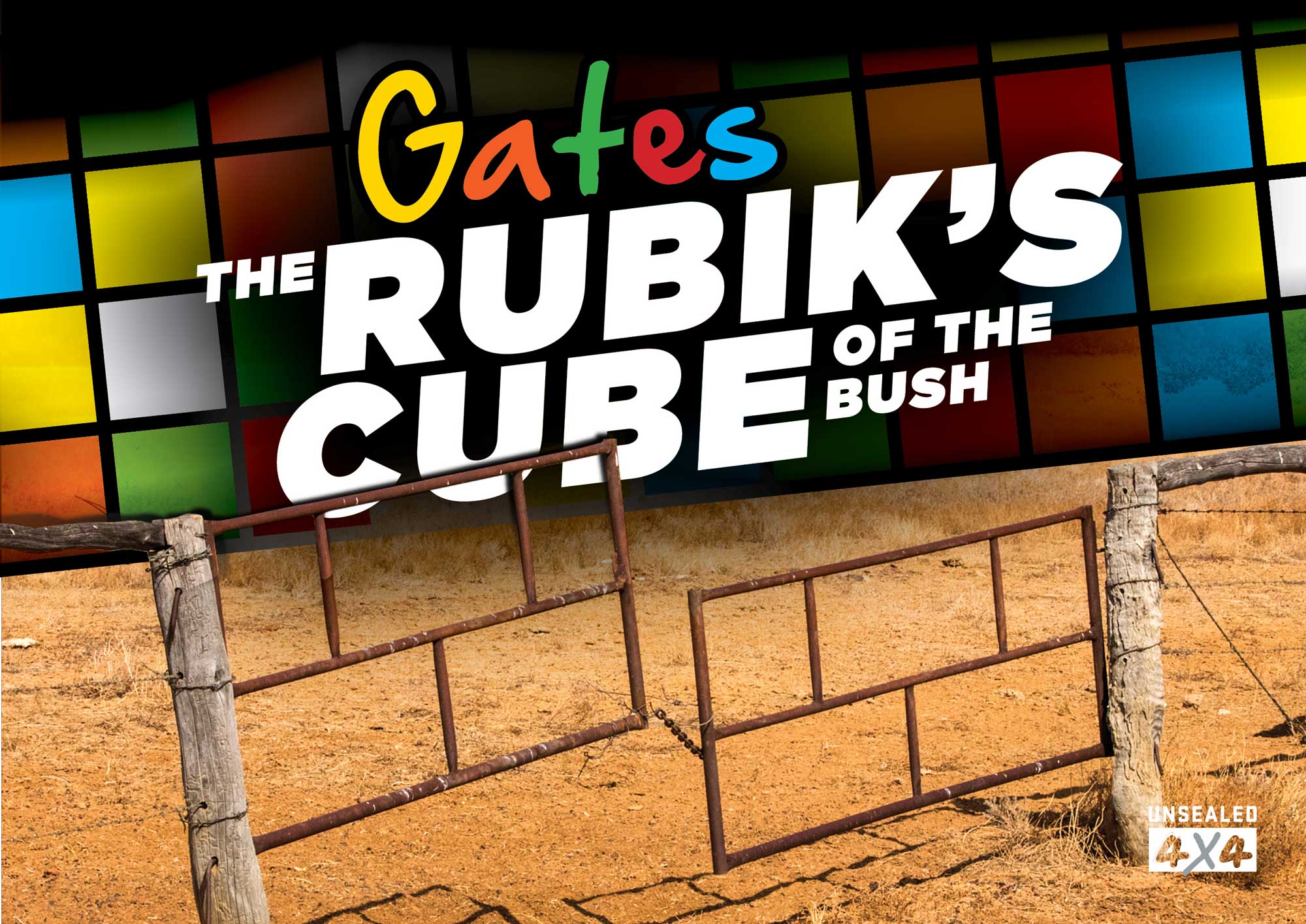If you have ever travelled rural Australia, you will have come across a gate that you had to open (and then close). Did you ever have trouble with the latch, even slightly? If you never have, you haven’t seen enough gates. Often it is the passenger who will be the designated gate opener… so maybe they had trouble as the driver looked on thinking ‘how hard can it be’?
On a recent 5,000km drive through the Outback, taking in Queensland, New South Wales and South Australia, I set myself a quest to see how many different types of gate latches I could find. One specific type still eluded me. The holy grail of gates for me was a bogan gate tensioned by a hames.
The Bogan Gate
Lost you already? A bogan gate is another name for a wire gate. These are normally tensioned by some sort of lever. A hames was part of a harness used to attach a plough or cart to a horse so it could comfortably pull the load. Real horsepower, a term that meant something before Newton-metres came along!
A good fence is taut and strong; and will stop cattle or sheep from charging through it. The gate can be the weak point – particularly if the gate is a bogan or wire gate. This is why they need to be tensioned by something a bit stronger than the strength of the average human arm. Leverage is the key. This is where the hames comes in.
The lever needs to be strong but relatively light and thin. A stick would often break; so as the horse-drawn cart or plough went out of fashion, there were a lot of old metal hames lying around. Someone saw the solution to a problem and the hames was re-purposed for another 40 years. These days the lever is often a pipe or shortened star picket.
Sometimes when cattle were involved, even more leverage was required to tension the gate so a bigger lever was used. As trees were more plentiful than iron bars, wood was used. The thick wooden lever was often hinged at the base of the gatepost (or sometimes in the middle); then the tensioning wire was attached to the log with the other end attached to a metal ring to go over the post on the wire gate. These were a little more complicated… hence my initial fail in the video.
The ingenuity of these pioneer farmers should not be underestimated as they utilised what was around them to create solutions for day-to-day problems. Most of us now have Bunnings close at hand if we need something.
The Metal Gate
Although there are many bogan gates still in use, the advent of the metal gate saw some local ingenuity as well. Easier to use, the metal gates would have been a big step up from the clumsy wire gates… but they still had to be securely fastened when closed.
Too easy, we say. Just wrap a chain around it. Maybe; but the stockman was often on his own, possibly dealing with his horse, a dog, and a mob of sketchy cattle or sheep. He (in most cases) needed something quick, strong and reliable to fasten the gate closed.
This is where the creativity begins. The number of different types of latches in the bush (often made by someone on the property handy with a welder) shows that creativity is alive and well in the Outback. Chains are normally used and welded to one side of the gate. Fastening the chain to the other half can be as simple as dropping one link into a slot cut into a piece of metal. The problem with this is a smart (or accidental) steer. It may rub its nose on the chain for an itch and unwittingly lift the chain and open the gate. To counter this, there are variations of a link welded into the slot that needs to be held back to release the chain. Not so easy for a steer.
One of the more interesting solutions was a metal sleeve that had to be lifted up, to then release a metal ring welded to the end of the locking chain. Most of the metal gate latches are variations of these. The addition of pieces of wire as a double latch and two chains and latches have been also used. Often the importance of the gate determines the strength or complexity of the latch.
Some gates like those in the dog fence get a lot of traffic – so those latches need to be simple and strong to be effective. The Cameron Corner latch is a good example – with an easy-to-slide bolt and a self-closing gate.
Why gates at all?
Why did the chicken cross the road? Because he couldn’t get through the gate, of course. Gates are there to keep certain things in or out of an area. This could be cattle, sheep, dingoes, rabbits or people like you and me. Before you go through a gate, perhaps ask yourself the question: ‘Should I be going through this gate’?
Normally the answer will be ‘yes’; but occasionally ‘no’. Farmers and stockmen are generally happy people, but go through the gate and introduce a weed species to the property and you’ll see another side of their nature. There are normally good reasons for locked gates so please respect the landowners’ requirements.
There are plenty of places to go where you are welcome, and plenty of gates that are open to you. Enjoy the bush! And leave the gate as you found it (unless it’s an open gate on the dog fence… then shut it).









